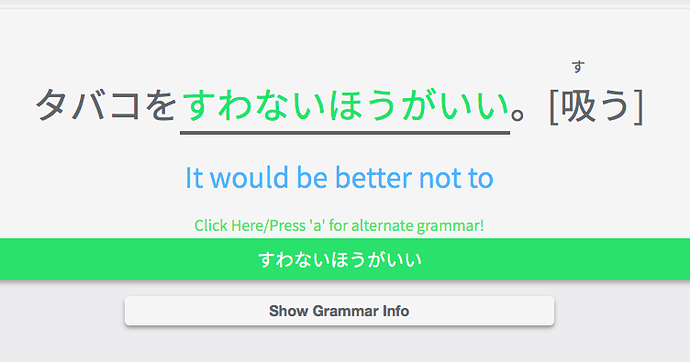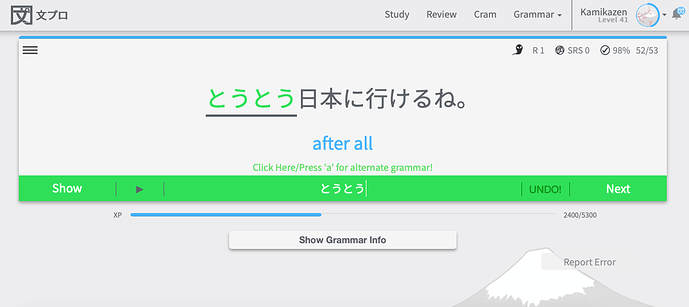Just want to give a little feedback on this change, now that I’ve had a chance to get used to it for a couple of weeks. I really do like the new system of hiding the orange hint upfront – I think that’s a great change, and as others have said, it’s made reviews much harder, but in a good way.
However, I wanted to bring up the change of putting the “necessary” hints (politeness, etc) in the _____ within the sentence itself. After using this for a while, this has been pretty frustrating for me, because the hint disappears as soon as you start typing, and if you get the answer wrong, it doesn’t reappear.
Take this example, from my current review session:
When I get something wrong, I try to spend a little time thinking it through again to see if I can spot the error on my own, instead of just immediately revealing the correct answer (I find that helps me remember better). But at this point, it’s not really clear from the UI what’s wrong, is it?
In this case, it turned out that Bunpro was just requesting the polite tense:
It’s definitely my mistake for missing this before I started answering. But there’s no way to see that hint again until the next time the item comes up for review, and frankly, I’m so slow at working through some of these conjugations that by the time I’ve finished typing in my answer, I can’t be confident I’m remembering the hint correctly anyway. Note that even revealing the correct answer at this point (つけなければいけません) still leaves things ambiguous, because I can’t easily tell whether this had to be polite because Bunpro was simply asking for the polite tense, or because there was something about the grammar point/example sentence that inherently warranted the politeness.
Not sure if I’m alone in this, but just wanted to surface it, as it’s something that’s bitten me several times since the change was made. In general, I’m not crazy about hiding the hint during the review at all, but at the very least I think it would be an improvement if the hint reappeared after the answer is submitted. Thanks!







